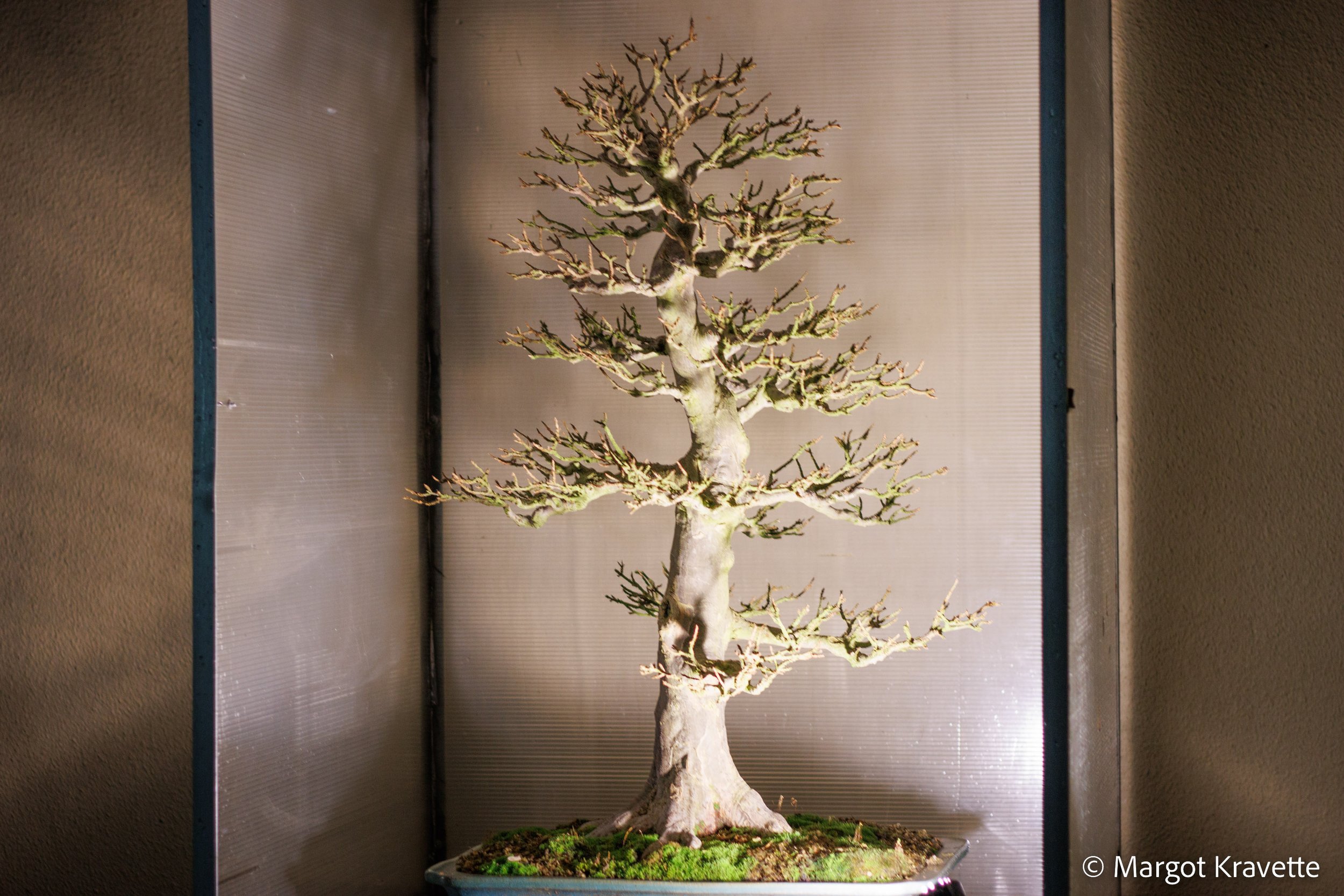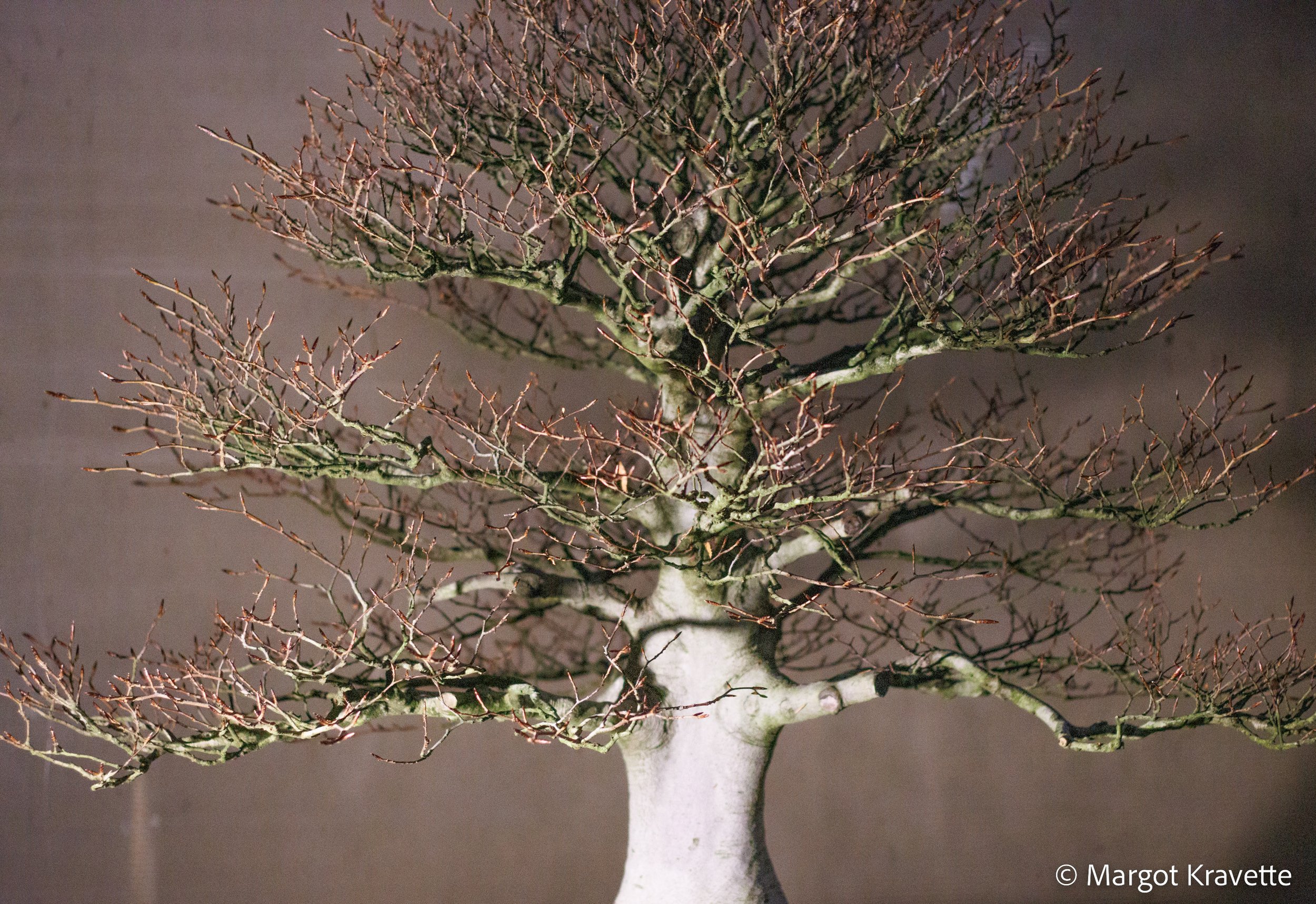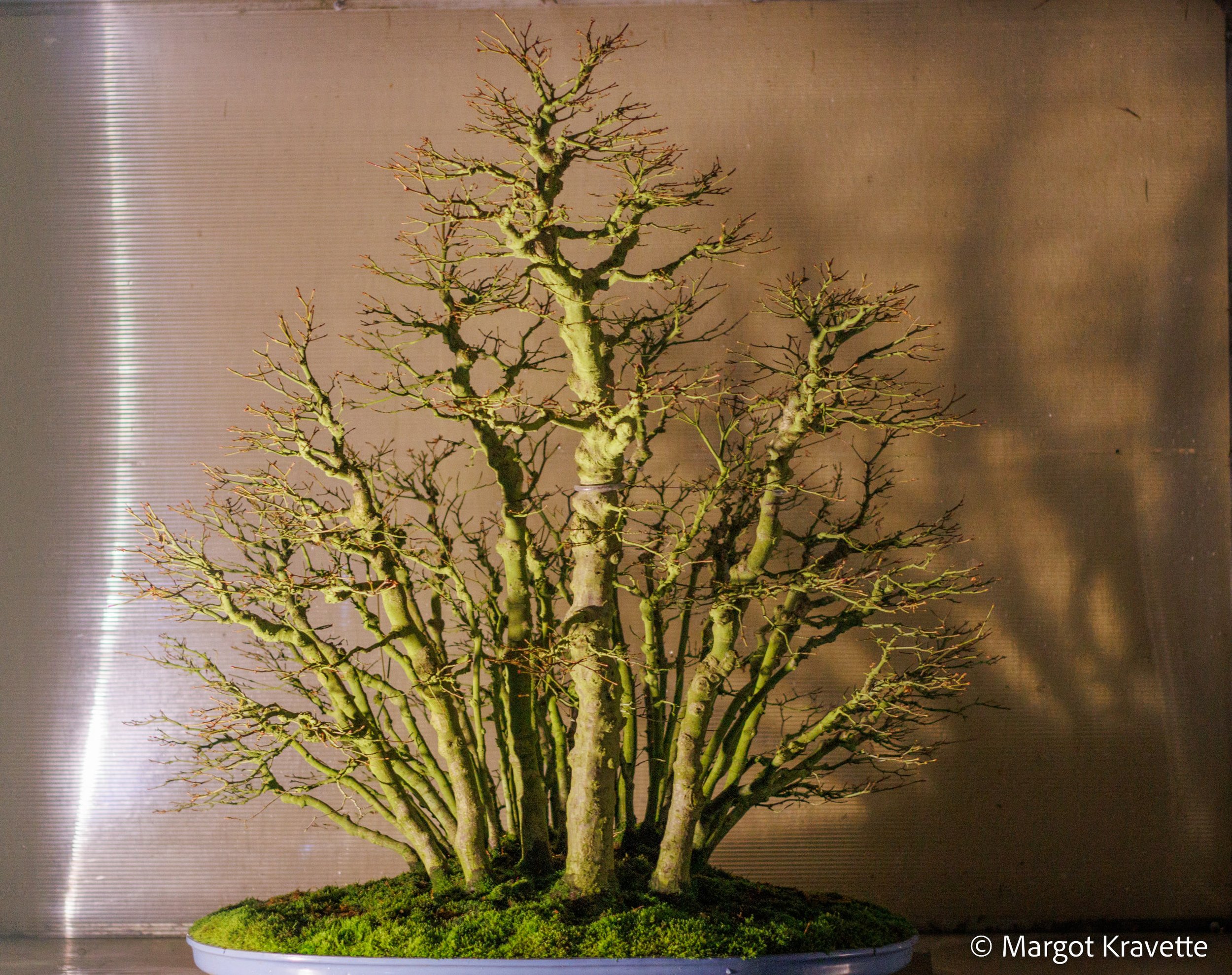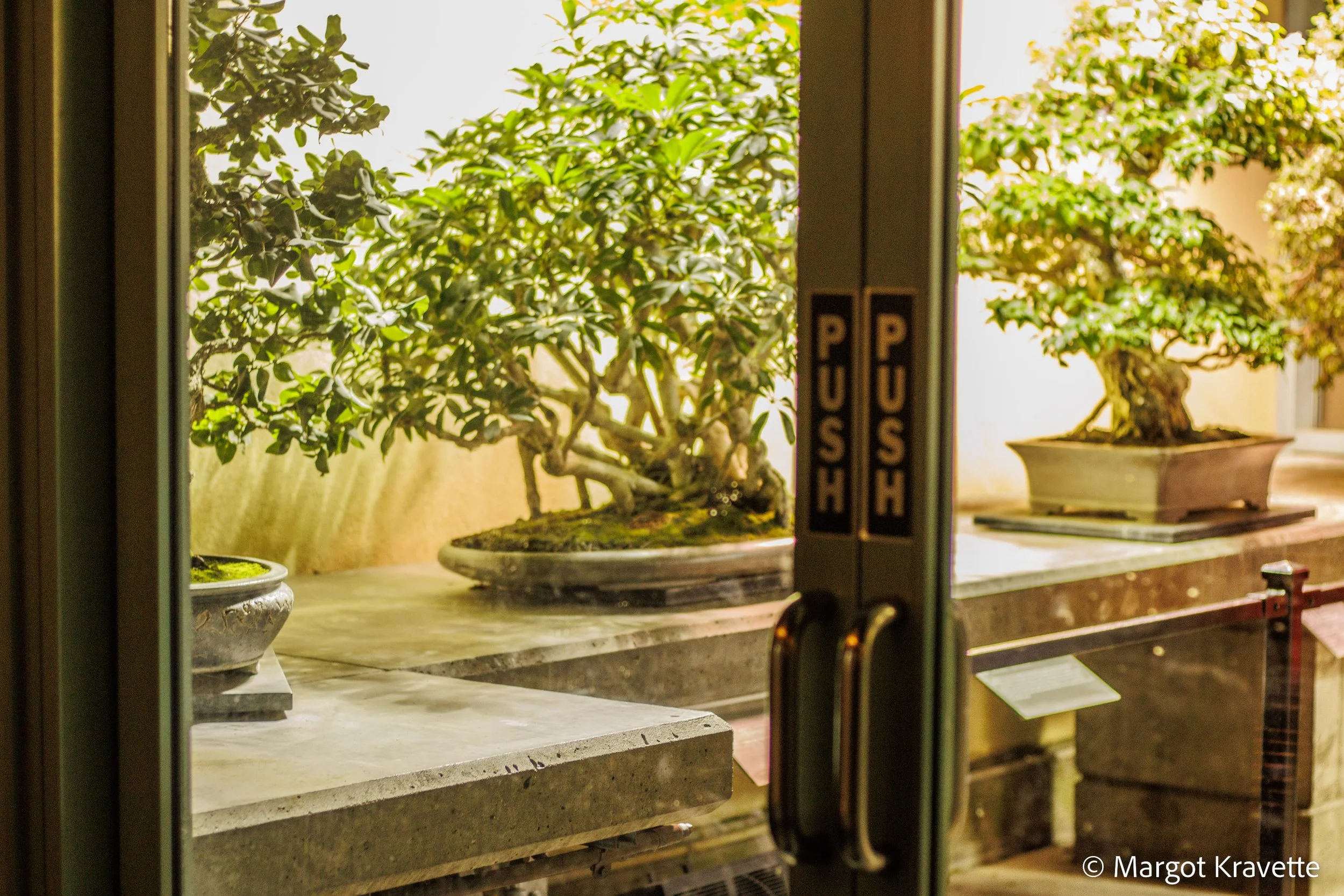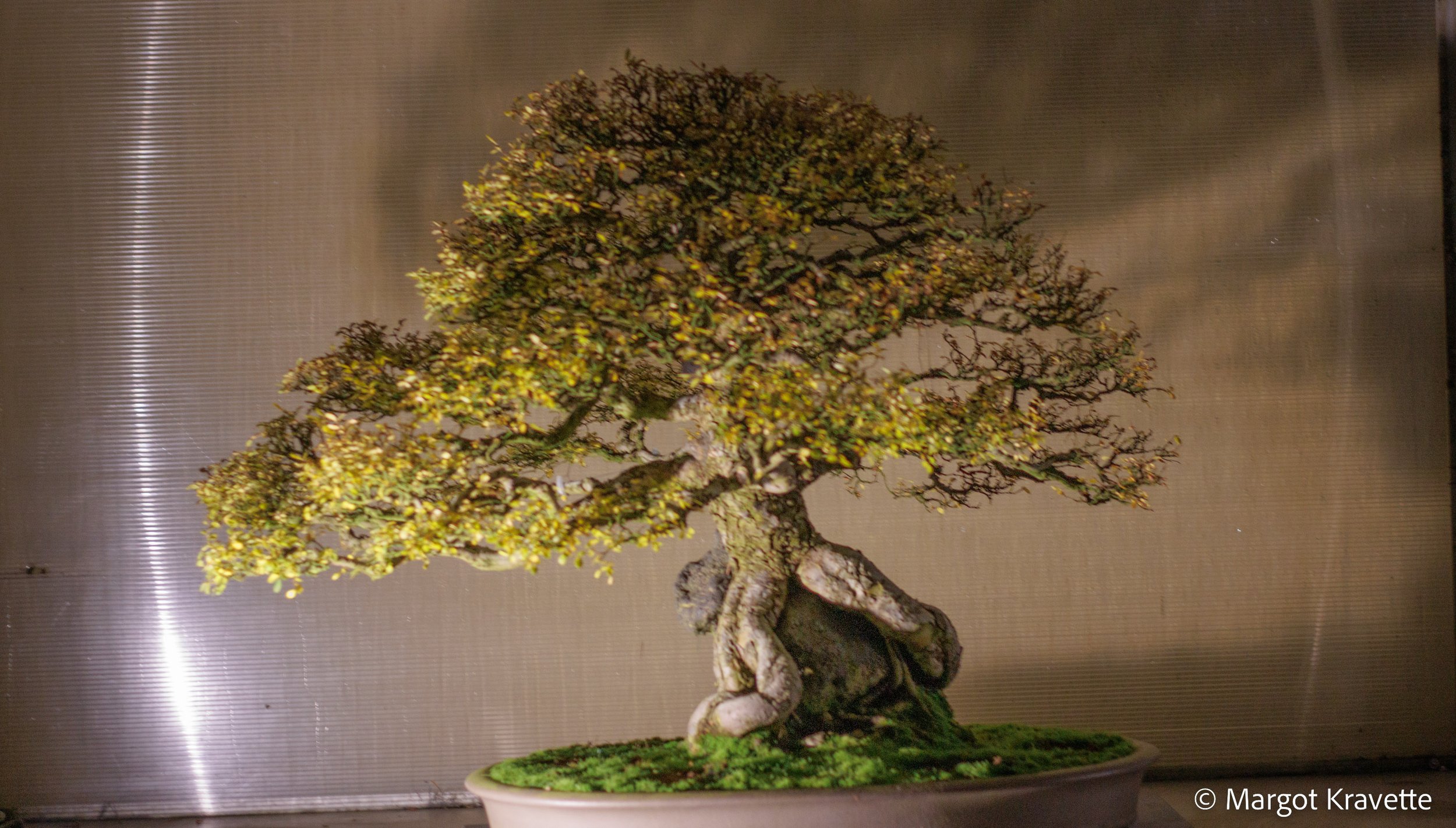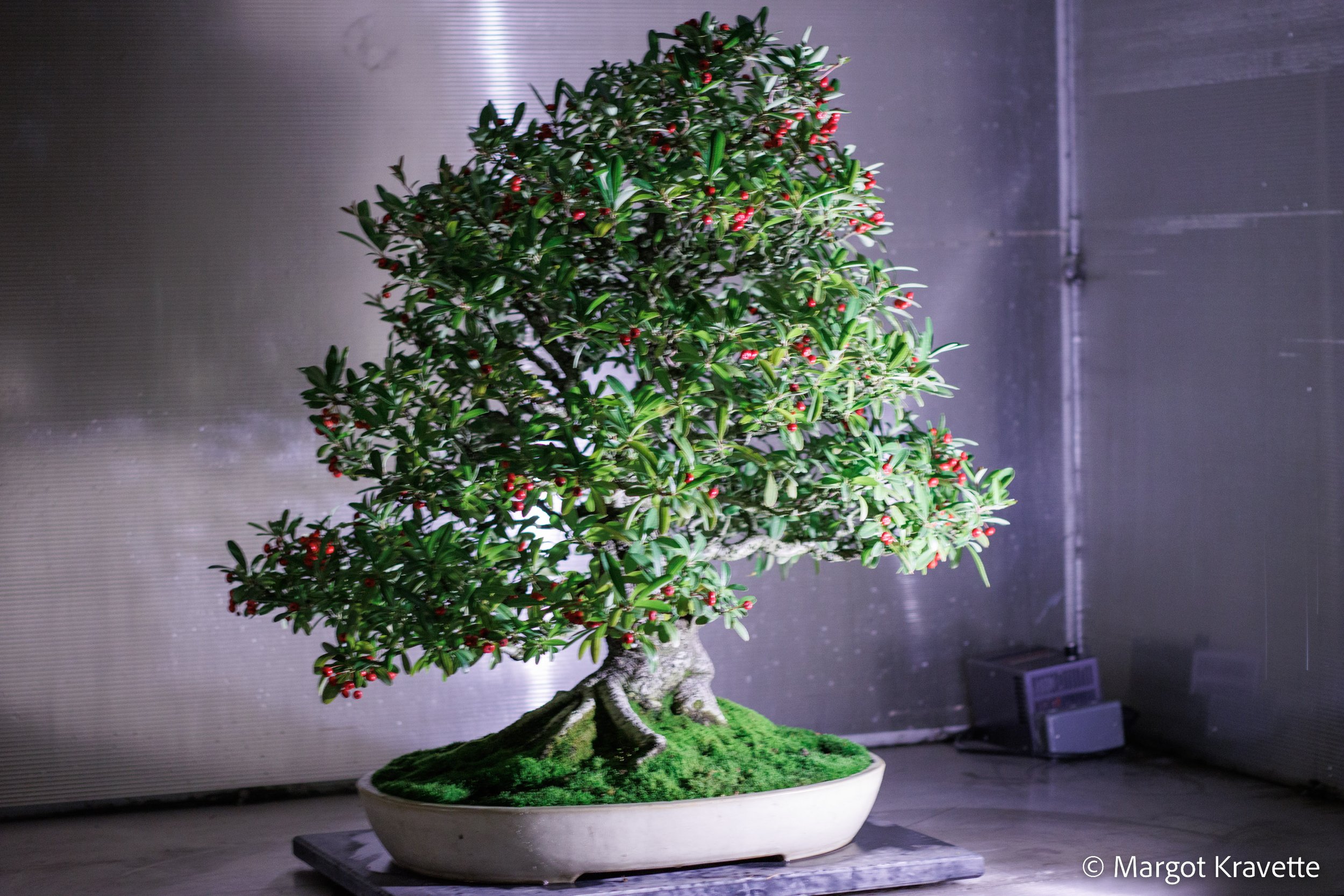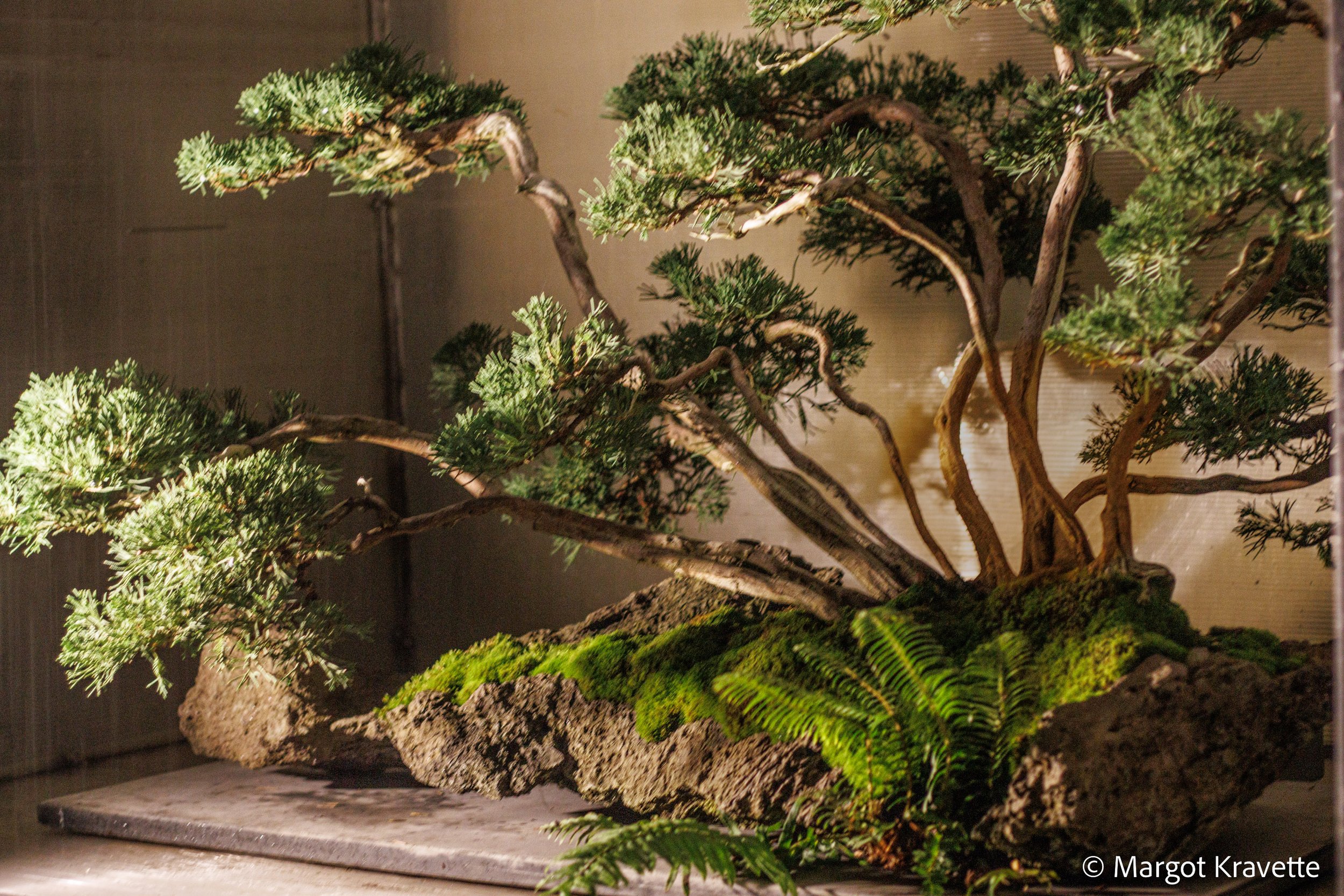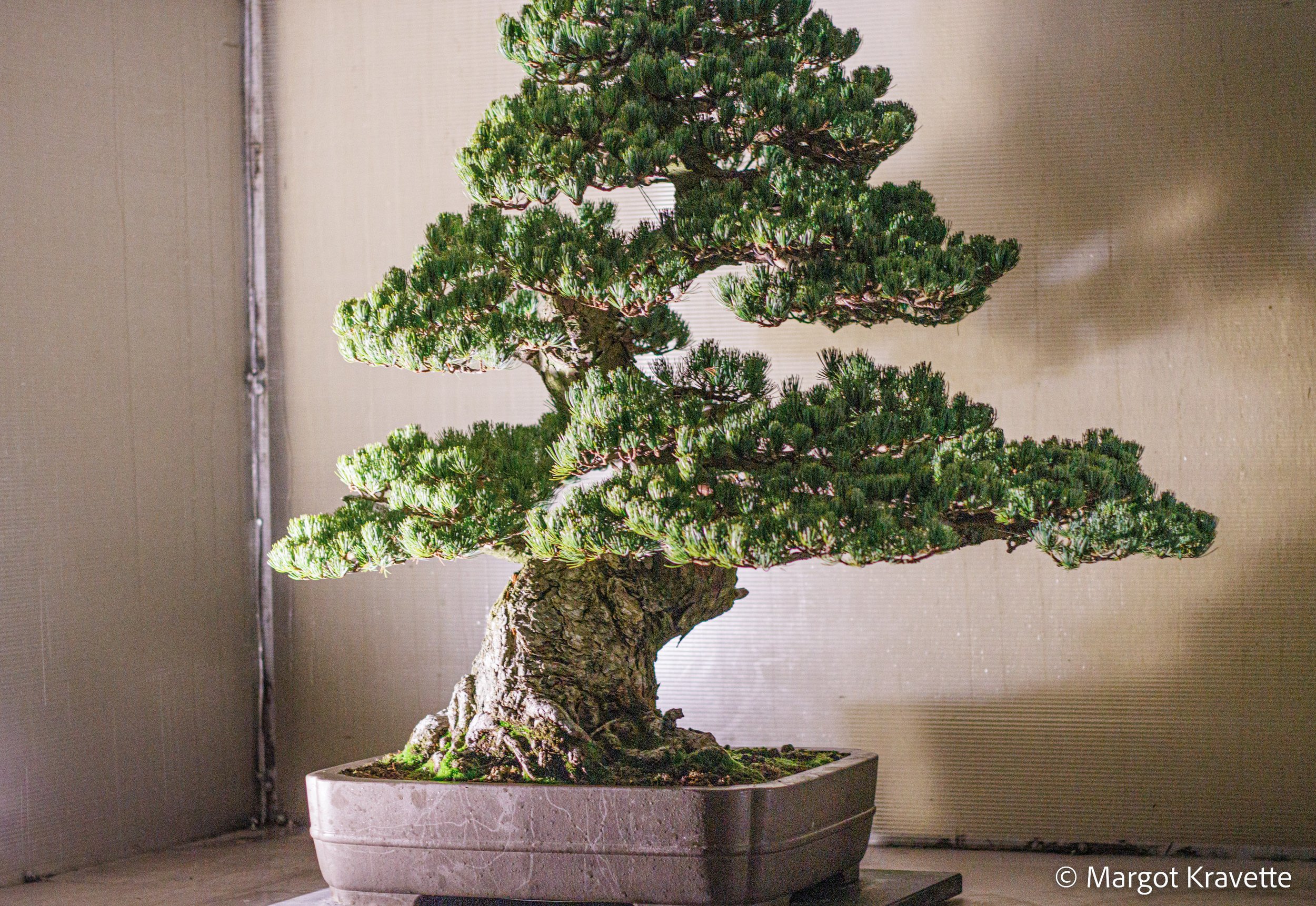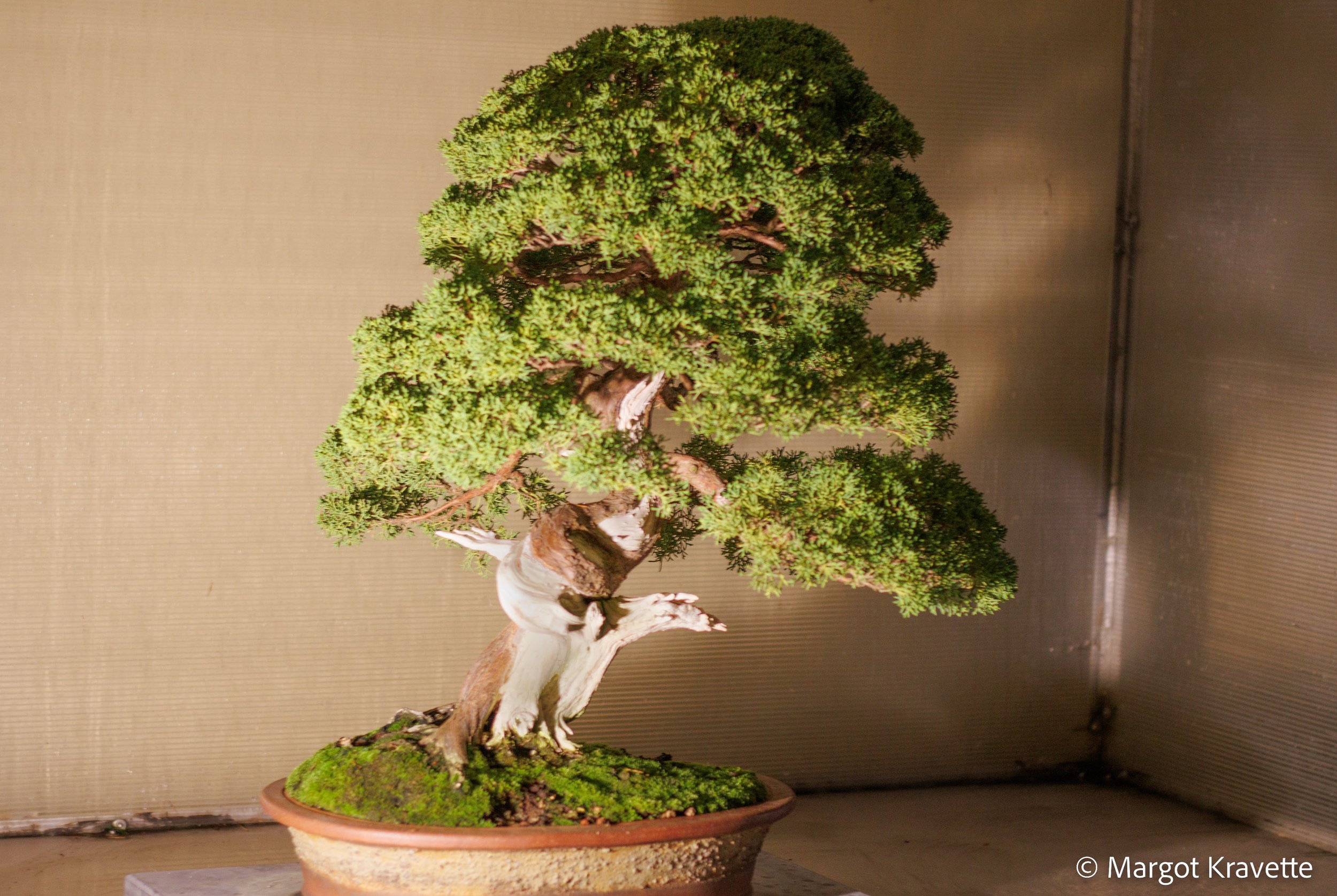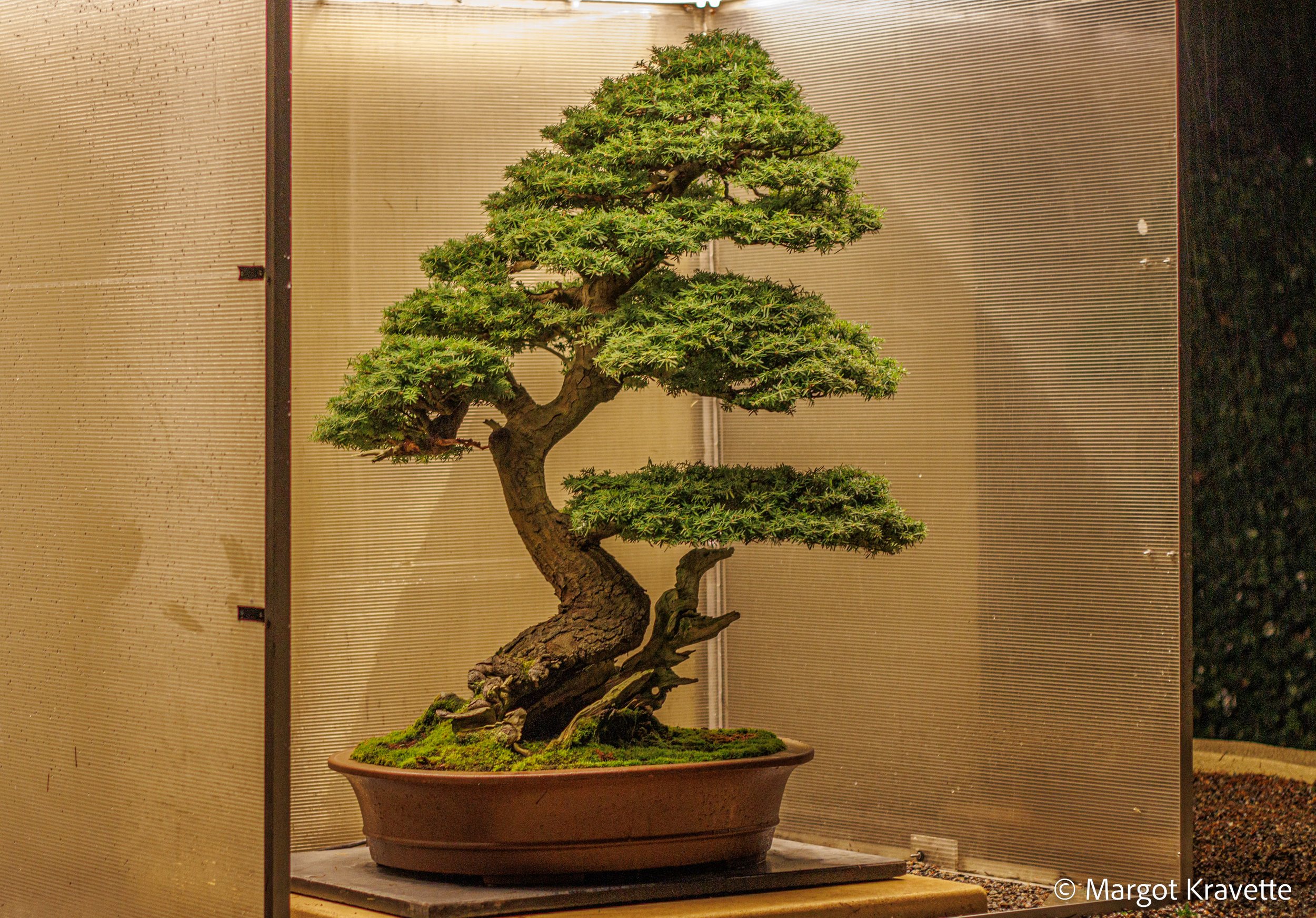Pacific Bonsai Museum
I returned to the Pacific Bonsai Museum in Federal Way for their annual Bonsai Solstice event where selected trees from their vast collection are softly illuminated. It was cold and rainy, but despite the weather there were many visitors of all ages; some with umbrellas but most without. My camera was protected, and the rest of me was not. But it was worth every drop of rain to see these beautiful miniature trees at night. Photographing them with their focused lighting was an opportunity to see these trees in a distinctive way. Their interesting shadows, especially with the deciduous bonsais without their leaves add a different dimension to their image.
The museum was founded by the Weyerhaeuser Company in 1989 in honor of the Washington State Centennial. With the help of a group of experts the Weyerhaeuser Company assembled a collection of bonsai whose origins represented the Pacific Rim countries. According to the museum’s website, in 2013 the company gifted the entire collection to a new non-profit, the George Weyerhaeuser Pacific Rim Bonsai Collection, known as the Pacific Bonsai Museum. The museum’s mission is described as “connecting people to nature through the living art of bonsai”. The Pacific Bonsai Museum is only one of two such museums in the United States dedicated exclusively to bonsai.
In addition to the bonsais acquired when the collection was developed, most of the bonsais have been donated, but a few select ones have been purchased. The oldest tree in the collection has a Date of Origin of the year 1500 (estimated date when it started growing) and has been a bonsai since 1986. (In Training Since Date).
At any given time 60 of the 150 bonsais are on display. They are rotated based the annual exhibit, the stage of the bonsai’s development or if there is something unique about a particular tree such as its flowering. Most of the bonsai are displayed outside year-round. In the extreme winter conditions, each one is protected by an enclosure that acts as its own greenhouse. There is also a conservatory that houses the tropical bonsai collection indoors.
In the late spring earlier this year Debby and I were visiting the rhododendrons, and before leaving we stopped to take a quick look at the bonsais, as the gardens are adjacent to one another. I noticed a gentleman who was photographing one of the bonsais and I began a conversation with him. He was David DeGroot, the curator of this bonsai collection from 1989-2014, and well known for his books on bonsai design. Mr. DeGroot was kind enough to allow me to record our conversation so I could share some of it with you.
Q. What attracted you to bonsai?
A. What first attracted me to bonsai was the fact that they were trees and they appeared to be normal large trees like we would see in nature, but they were in a container that you could hold in your hands.
Q: How did you learn about bonsai?
A. I studied with teachers here in the US and then once I took the job here as curator, I was able to go to Japan to study with the professionals there.
Q. How do you relate bonsai to art of other media?
A. Bonsai is art like any other medium like glass, clay, metal, and even paint. We use the same artistic principles as with other medium, and the three I use primarily are:
- Proportion – so that it has good proportion in its parts which makes it look realistic if the proportion is right
- Good balance – a sense of balance could mean balance between parts as in density. A uniform density. Or if it’s leaning does it appear stable?
- And Harmony – the balance between elements that contrast and elements that repeat. So repeating elements allow us to see a pattern and make sense of it; but they also allow us to get bored if everything is predictable. So, you have to have some contrast to mitigate that, and then when you have the balance between contrast and repetition you have harmony.
Those principles apply everywhere in art. Bonsai, other than the fact that it’s a living medium, is like every other type of visual art.
Having now been to the Pacific Bonsai Museum several times I feel drawn to return. Each bonsai is unique in so many ways and I want to continue enjoying them and learning about them as they change through the seasons.




